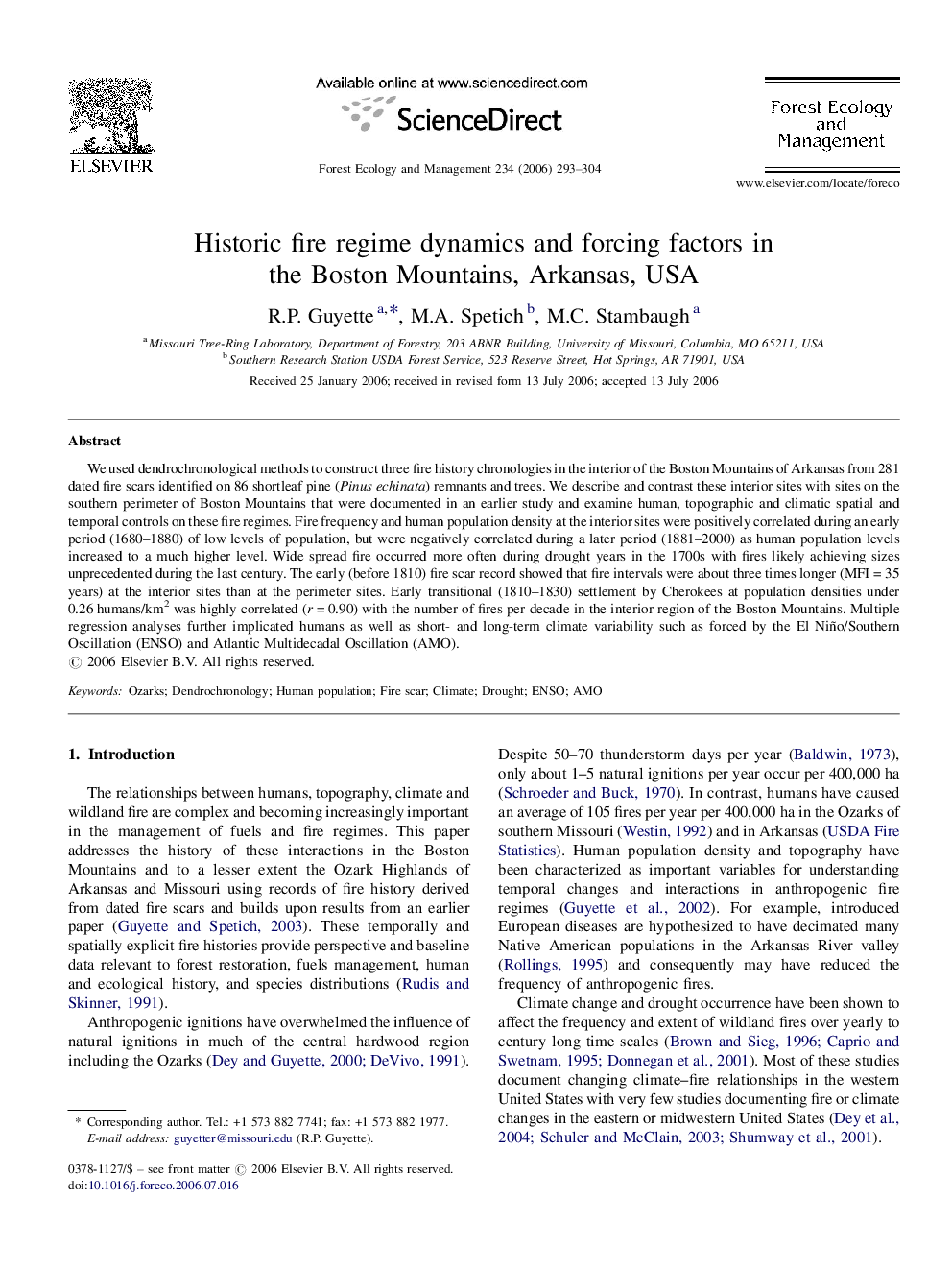| Article ID | Journal | Published Year | Pages | File Type |
|---|---|---|---|---|
| 90214 | Forest Ecology and Management | 2006 | 12 Pages |
We used dendrochronological methods to construct three fire history chronologies in the interior of the Boston Mountains of Arkansas from 281 dated fire scars identified on 86 shortleaf pine (Pinus echinata) remnants and trees. We describe and contrast these interior sites with sites on the southern perimeter of Boston Mountains that were documented in an earlier study and examine human, topographic and climatic spatial and temporal controls on these fire regimes. Fire frequency and human population density at the interior sites were positively correlated during an early period (1680–1880) of low levels of population, but were negatively correlated during a later period (1881–2000) as human population levels increased to a much higher level. Wide spread fire occurred more often during drought years in the 1700s with fires likely achieving sizes unprecedented during the last century. The early (before 1810) fire scar record showed that fire intervals were about three times longer (MFI = 35 years) at the interior sites than at the perimeter sites. Early transitional (1810–1830) settlement by Cherokees at population densities under 0.26 humans/km2 was highly correlated (r = 0.90) with the number of fires per decade in the interior region of the Boston Mountains. Multiple regression analyses further implicated humans as well as short- and long-term climate variability such as forced by the El Niño/Southern Oscillation (ENSO) and Atlantic Multidecadal Oscillation (AMO).
